WAIMARAMA BEACH YAKKING
By Blair Whiting
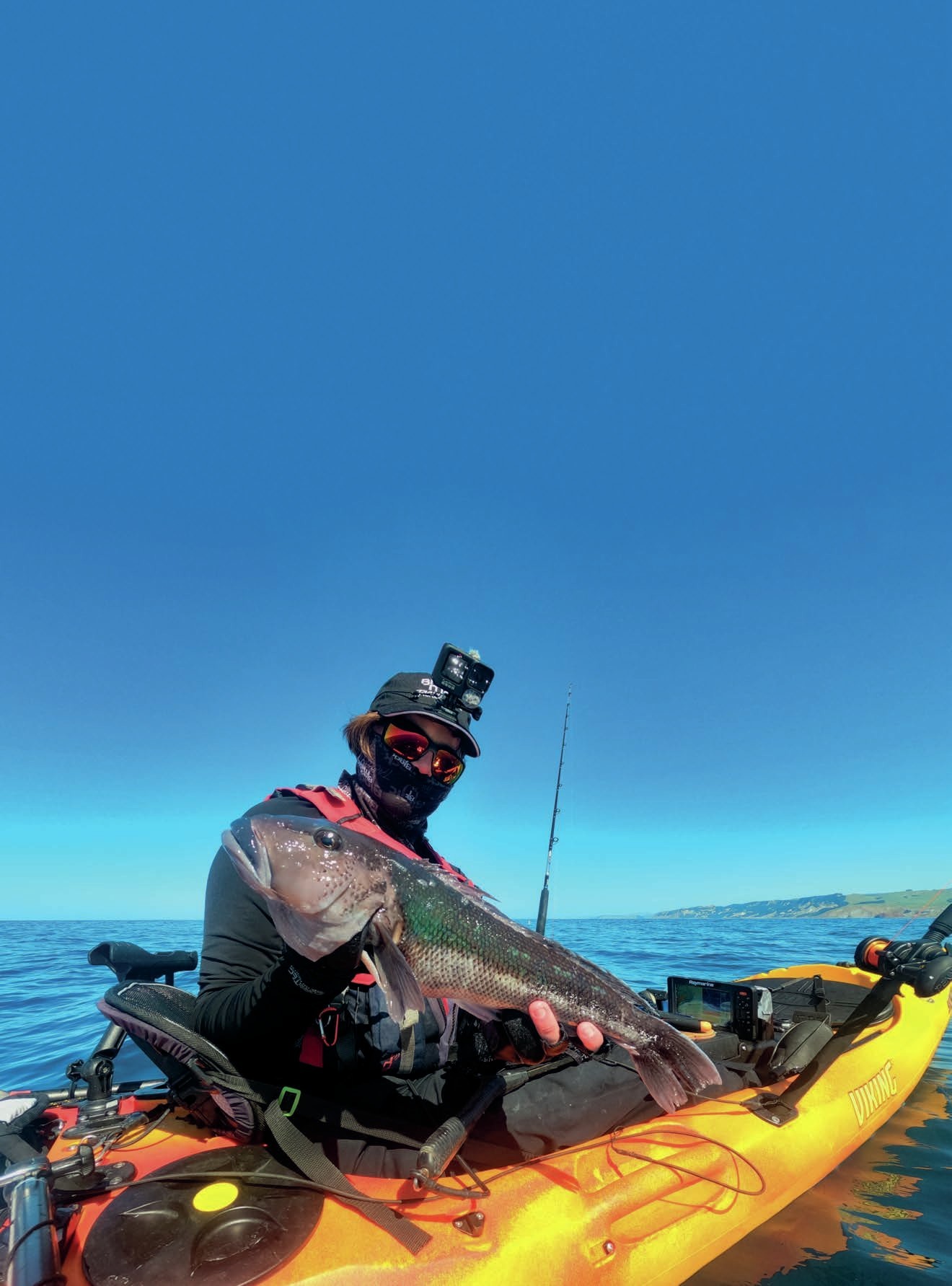
Being based in a new location has opened my eyes to a brand-new part of the ocean to explore on my kayak. Covering lots of ground isn’t a strong point for my craft of choice, but since I am travelling so slowly, I am less likely to miss anything and can find spots others might be motoring right over. In a location like Waimarama Beach, a kayak is perfect for punching through the surf and adventuring around Bare Island and the many points of structure spread widely up and down the coast.
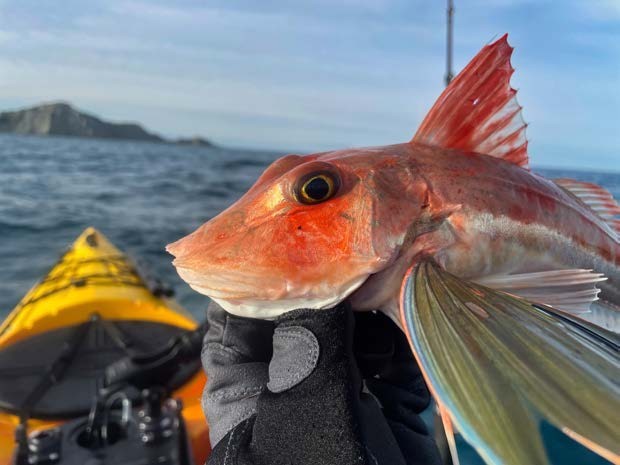
Due to being south of Hawkes Bay proper, the main target fish species are quite different from those by Napier. The two most common species at Waimarama would be gurnard and tarakihi, both a short paddle away. Snapper, which are abundant on a similar latitude over on the west coast, are comparatively rare throughout the central Hawkes Bay coast and only pop up in catches from time to time. Blue cod and blue moki are common catches from the huge boulders and pinnacles that surround Bare Island. Large kingfish patrol the reef edges looking to pick off any fish that has strayed too far from safety. Giant groups of sea perch and goatfish sit on the sand patches near the rocks and snatch any bait that is dropped near them. Any day can produce all of the above species and more depending on the location and style of fishing you employ.
Waimarama is set on an exposed coast, so the swell can be volatile and pick up from the south very fast. But with a few days of westerly winds the ocean can settle into a beautifully flat pancake which provides fairly easy launching. ‘The reef ’ is where local boaties launch all manner of craft. I, too, favour this sheltered spot when heading out for a day on the water. The rocks at ‘the reef ’ extend from the high tide mark out to sea and create a calmer spot to get the kayak out through when the swell drops to under one metre. Once through the surf, a kayaker has many different locations to fish but the first and most rewarding by far is the sand just out behind the breakers. Hordes of kahawai patrol the water from 5-10 metres depth and there aren’t many days when you can’t drop a line down and catch a few of these. In lower swells, the water often has a deep blue colour and this is when the gurnard move right in close to the beach to feed on small paddle crabs. At anchor or on the drift they can be targeted with a wide array of techniques. Compared to the average gurnard these ones get big, too. An average fish would be over 40cm with fish reaching 50cm reasonably common.
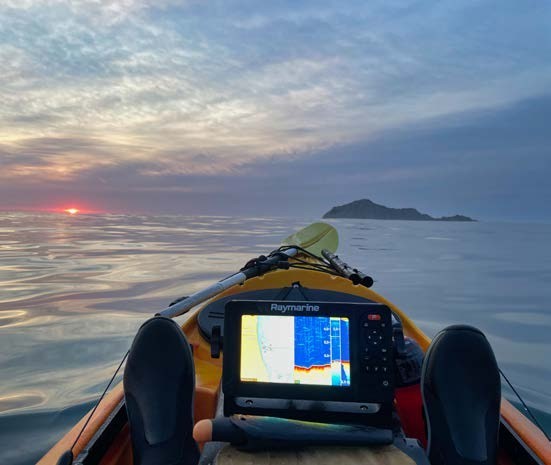
Further out to sea, the sand flats continue until Bare Island’s foul injects a wide area of rock that stretches for kilometres. Blue cod, tarakihi and sea perch are the most common catches off the reefs in 20-30 metres with some of the tarakihi reaching impressive sizes in relatively shallow water. This is an area perfectly suited to slow jigging with microjigs and kaburas as most of these species will take a jig if the assist hooks are small enough. It also gives you a chance of hooking into the elusive john dory that are far more common off Waimarama than in Hawkes Bay. Kingfish and blue moki also respond to these techniques and I have been taken into the rocks on more than one occasion after something unstoppable has grabbed my small jig.
“ With a few days of westerly winds the ocean can settle into a beautifully flat pancake which provides fairly easy launching. ”
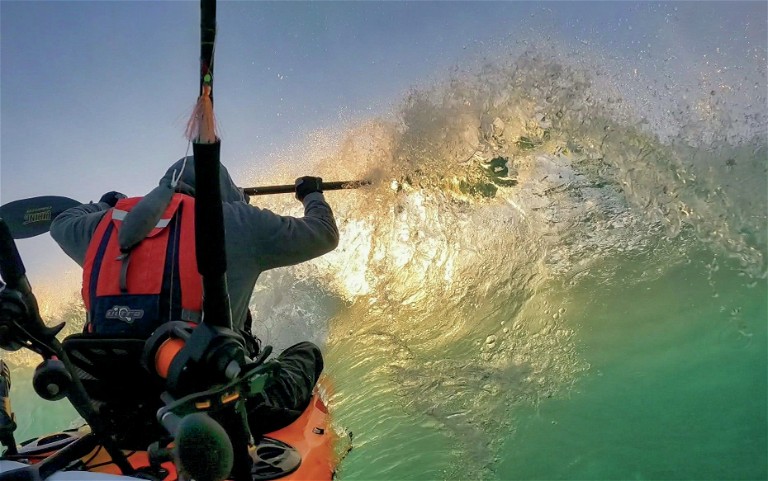
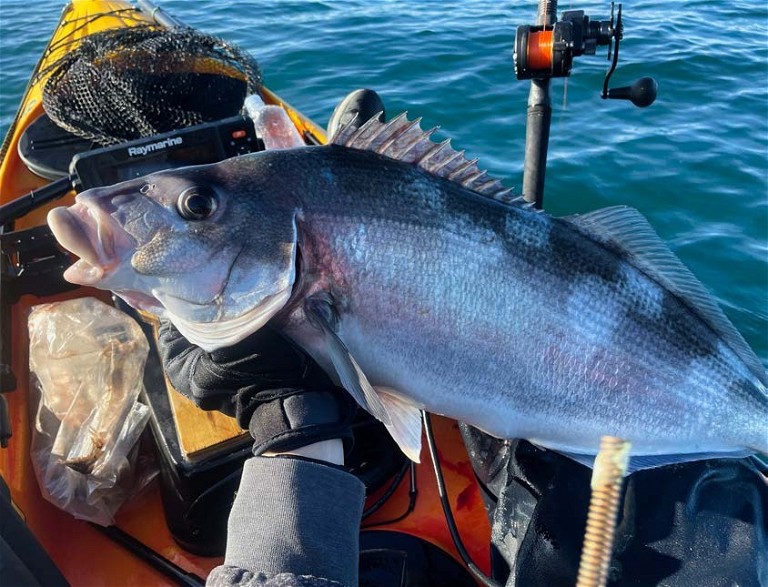
As you get further out to sea, the reefs begin to give way to mud and the sea floor’s gradient increases once you hit 60 metres. In a short space of time, you find the bottom going from 65 metres down to 80. Massive gurnard can be found feeding along this slope, along with tarakihi. Baitfish like blue and jack mackerel school up into tight packs to protect themselves from large ocean predators like mako sharks and kingfish. Spiny dogfish also get in on the party and scavenge throughout this depth, making the fishing somewhat frustrating when you have to pull them up all that way!

The incredible water clarity year-round makes it a great location to avoid undesirable species like spiny dogfish over the sand. In previous years back in Napier, I would not dare fish in the late winter period as it was too difficult to find tablefish among the pesky sharks. Waimarama has no spring frosts, so even when Hawkes Bay has a big one over the hill, I can happily get out of bed without freezing my fingers off before launch. The contour lines are steep so you can quickly get to deeper water. Reefs are also widespread and hold a huge variety of fish. With changeable weather patterns, fish stocks are less vulnerable than they are up the coast, as a sheltered launch is impossible without the right weather pattern lining up. Due to the natural protection and smaller boat fleet, there are decent stocks of fish present on the coast for anglers to get stuck into.
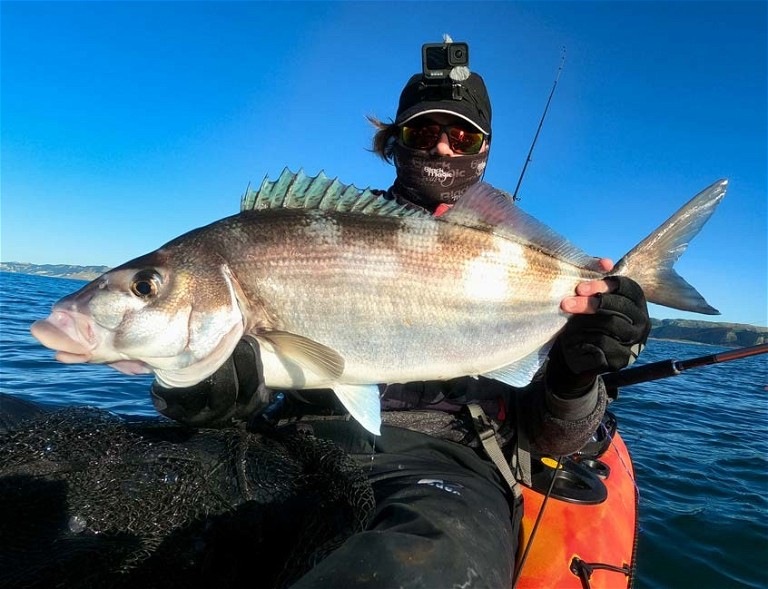
“ Blue moki are especially fond of shellfish or crab-flavoured bait. ”
“ Massive gurnard can be found feeding along this slope along with tarakihi. ”
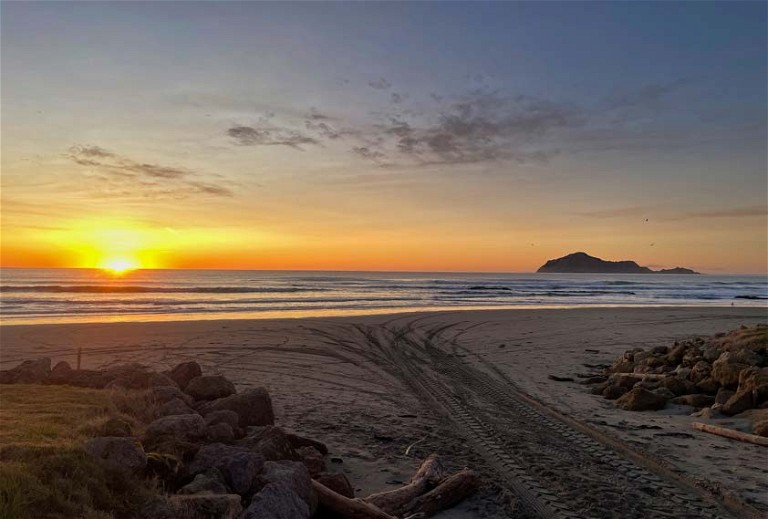

When I head out onto Waimarama‘s reefs to target tarakihi, blue cod and moki, I have gone away from using natural shellfish baits altogether – they get torn to pieces by leatherjackets and other small reef fish. It’s just not worth the smelly hands and constant rebaiting. So instead, I use shellfish-flavoured Fishbites. With these synthetic baits, I can tip my rigs with a tough bait that will last long enough for a desirable fish to come in and have a chance to take the bait.
Blue moki are especially fond of shellfish or crab-flavoured bait. In the past, it was too hard to keep a bait presented amongst the pickers, but in this year alone I have picked up numerous solid moki, and other boaties off the beach have noted the same with some I had talked to never knowing blue moki were present in some of these spots at all! I place a small square of the baits onto my ledger rig which includes some tough trace and some small 3/0 circle hooks. For the number of species on offer, I don’t like to limit the potential because my hooks are too big! Tiny hooks like this are more than capable of beating a kingfish but are still delicate enough for a small-mouthed tarakihi or goatfish to fit into their gob. Small baits sometimes equal large fish – they can’t always be eating big prey, right?
Fishing with ledger rigs compared to lures is far more common down here, but around the island kaburas are incredibly effective on larger blue cod. Using a 60g jig (I find the colour usually doesn’t matter) is a great way to fish for cod over 40cm. The smaller blues aren’t as bold as the big boys. Sometimes if I pass over a rock and see a big mark, I’ll bomb a lure down to see what the reaction is. Blue cod are extremely inquisitive and follow a lure or bait much higher than you’d ever expect. With a jig dropping down in clean water, cod can fly up 10 metres off the bottom to grab the offering. I’ve even had other blue cod follow a hooked fish all the way up to the surface to try and steal the food out of the other fish’s mouth. If there is one good bluey on a rock, usually there won’t be another far away trying to steal his meal.
So far Waimarama Beach has rewarded me with a wide array of fishing opportunities. I’m excited to see what this summer will bring. With a few kingfish sightings under my belt, I can tell you once that water warms up and the bait starts moving in close there will be every chance of tangling with some of the monster kingfish that haunt the reefs. There’s also the speedy albacore tuna to hunt down out behind the island, too!
